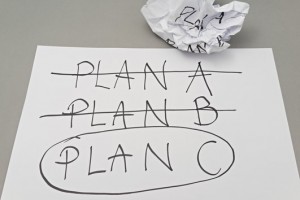
“Failure isn’t fatal, but failure to change might be.” – John Wooden
Team building is one of the most commonly applied group development interventions in organizations today, according to the scientific study “Does Team Building Work?”1 But what everyone wants to know is why? Why is team building so popular? And, most importantly, does team building work? This was the questions that researchers Deborah Diazgranados, Cameron Klein, Eduardo Salas, Huy Le, C. Burke, Rebecca Lyons, and Gerald Goodwin sought to answer. They did this by looking at four specific team building components: goal setting, interpersonal relations, problem solving, and role clarification.
“Results (based on 60 correlations) suggest that team building has a positive moderate effect across all team outcomes,” write Diazgranados et al. “Moreover, all the components (i.e., role clarification, goal setting, interpersonal relations, and problem solving) of team building had a moderate effect on outcomes but the goal-setting and role-clarification components had the largest effect.”
How Team Building Improves Business
First up is Goal Setting. By “identifying specific outcome levels, teams can determine what resources are needed.” Perhaps more importantly, teams can identify what areas – communication, teamwork, morale, etc. – need immediate attention and improvement. And by involving team members in the goal-setting process, you further immerse them in the organization. As a result, they become more personally and emotionally invested in the success of the organization, which will cause them to work harder to achieve organizational goals.
Next comes Interpersonal Relationships. Collaboration does not always come naturally. As researchers Jon Katzenbach and Douglas Smith once famously said, “Groups don’t become teams because that is what someone calls them.” Sometimes you, as a manager or employer, must urge your employees to work together and become a team. You must find a way to open up the lines of communication and foster growth. “Effective internal communications can keep employees engaged in the business and help companies retain key talent, provide consistent value to customers, and deliver superior financial performance to shareholders,” according to the Watson Wyatt Effective Communication 2009/2010 ROI Study Report.
Moreover, because teams are comprised of individuals with their own, personal wants, needs, and goals, it is important to establish individual roles within the team early on – Role Clarification. “Improve understanding of their own and others’ respective roles and duties within the team.” This helps set clear expectations by defining a team hierarchy. But what happens when conflict arises?
This is where Problem Solving comes into play. As former President Ronald Reagan once said, “Peace is not absence of conflict, it is the ability to handle conflict by peaceful means.” By tackling problems head on and exploring new and unique ways of problem solving, you encourage your team to start looking outside the box and examining exciting and effective ways to approach everyday challenges in the workplace.
Now, Team Building can help further each of the above areas, with goal setting and role clarification seeing the strongest impact, according to Diazgranados et al. Moreover, a “meta-analysis of data from 103 studies [conducted between 1950 and 2007] provides the strongest scientific evidence to date that team building can have measurable, positive effects on team performance.”2

Customized Team Building Programs Designed to Maximize Organizational Effectiveness
“Team building activities should be designed, planned, executed and monitored so as to create synergy, increase skills and knowledge, create organizational flexibility, provide members satisfaction and allow members freedom to participate in decision making and implanting changes,” write researchers Jacqueline M. Omuya, David M. Kungu, Leonard S. Mulongo, and Dedan O. Ong’anya.3
Conveniently located between Baltimore and Washington, DC, Terrapin Adventures is uniquely suited to provide a Team Building solution for any group. Our group facilitators and guides will lead your team through unique, exciting, and carefully designed Team Building activities. Through these exercises, bridges to communication are built, cooperation is improved, and creative problem solving is unleashed. And all of our team building efforts conclude with a debriefing, where the group facilitators and guides relate the day’s team building activities into your group’s daily corporate workplace challenges.
We service Maryland and Washington, D.C., and have traveled to other states as well.
Schedule Your Team Building Session!
If you have any questions, please call Terrapin Adventure at 301.725.1313, or email us at info@terrapinadventures.com to learn more.
Works Cited:
- Klein, C., D. Diazgranados, E. Salas, H. Le, C. S. Burke, R. Lyons, and G. F. Goodwin. “Does Team Building Work?” Small Group Research 40.2 (2009): 181-222. Web.
- “Team Building Works: Results of 103 Studies.” VictorsFood. N.p., 2013. Web. 30 June 2016.
- Omuya, Jacqueline M., David M. Kungu, Leonard S. Mulongo, and Dedan O. Ong’anya. “Effects of Team Building on the Performance of Employees in Organizations towards the Realization of Millennium Development Goals: A Survey of Selected Banks in Eldoret Town.”International Journal of Current Research. Web.
